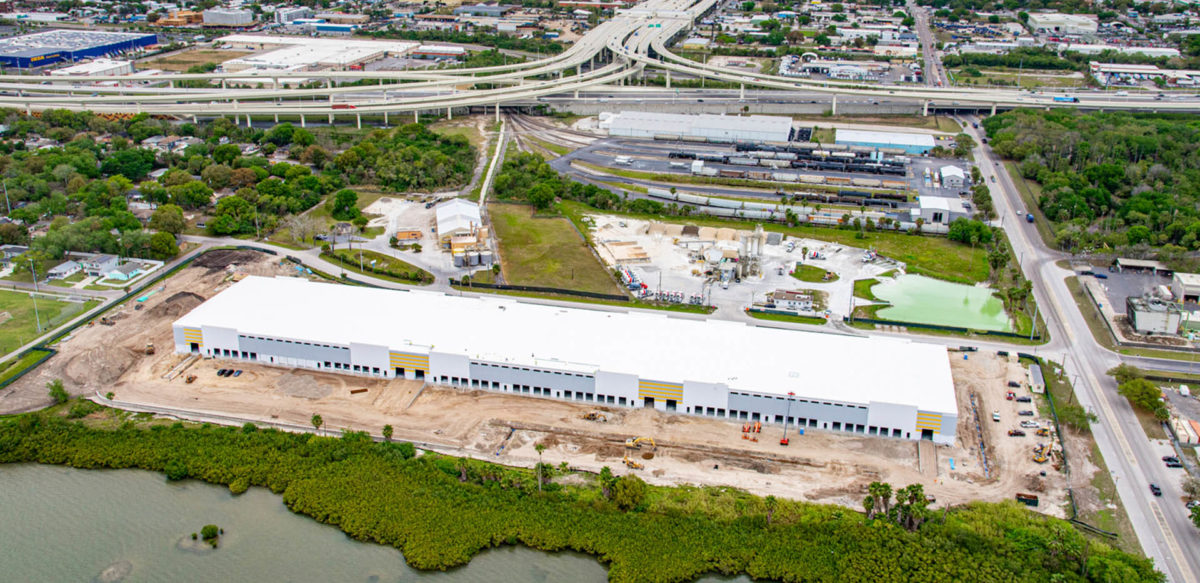News
Industrial Sector Shifts to Boost Response to COVID-19
News, Real Estate | April 03, 2020

As the world struggles with how to respond to the coronavirus pandemic, the industrial sector is taking center stage in the battle to produce, store and deliver goods. While some business sectors have stalled or stopped during this time, there are many essential services still at work and expanding production in the warehousing, distribution and light manufacturing sectors.
From online grocery delivery to medical supply manufacturing and distribution, there are businesses repositioning their operations to support relief efforts and help keep business flowing.
“This is an unprecedented time when companies are being asked to respond rapidly — or reposition themselves just to survive,” said Karl Heitman, founder and president of Heitman Architects, based in Chicago. “We are seeing companies looking to increase production or shift to making hospital masks and industrial grade hand sanitizers to fill the incredible demand from the healthcare industry and support their own operations and workforce.”
Heitman also noted that many newly constructed industrial buildings, designed in recent years to satisfy incredible demand for space in markets across the country, may provide much needed options for companies that are responding to changing market needs.
He specifically highlighted one newly constructed Class A fulfillment center his firm designed in Tampa that is being repositioned by ownership to support the medical needs of that 3 million population metro. The 178,000-square-foot Tampa Fulfillment Center at 101 South 34th St. was designed to serve the needs of ecommerce and last-mile warehouse tenants as well as traditional warehouse and distribution users.
Given its flexible and efficient design, the facility can be repositioned to accommodate a single medical response effort or be configured for several businesses that support the medical community or related industrial uses. There is 146,567 square feet available for lease.
The facility includes 32-foot clear height ceilings, 52-foot by 50-foot column spacing, a 130-foot truck court and ample dock and drive-in doors to support efficient loading, staging and deliveries. It is also equipped with 600 amp electrical service and multiple fiber providers for connectivity.
The facility is near downtown Tampa and close to major thoroughfares that connect with the area’s large population base. It is the only newly constructed Class A building of its size for lease in the market. Compared with other massive big box industrial buildings, Tampa Fulfillment Center’s medium size makes it well suited for being quickly repositioned for multiple uses.
“This facility was designed with ultimate flexibility,” says Gerard J. Keating, SIOR, CCIM, CEO of Keating Resources, the building’s ownership. “While no one could have anticipated the complexities of the world we’re experiencing today, that flexibility may prove to be extremely opportunistic as companies scramble to meet their immediate needs or look to reposition a business that might otherwise languish due to the current economic conditions.”
Heitman recently reached out to Keating and other clients to brainstorm ways to adapt facilities to meet current needs and help keep operations flowing. “During these challenging times, businesses need to be able to shift and turn to meet market demand,” Heitman says. “The companies that will survive and prosper moving forward will do so through hard work and a willingness to adapt to market conditions.”
For example, food ingredient companies could be well positioned to support the demand for industrial grade hand sanitizers. A plastics packaging company could expand into packaging for medical kits.
Industrial Transforms During Times of Challenge
This wave of industrial activity is the beginning of a transformation that will likely change the way logistics, warehousing, and construction operate after the pandemic, Heitman says. “When designed properly, many of today’s modern distribution facilities can be repositioned to serve multiple purposes. Instead of distributing automotive parts or food ingredients, they can be quickly tailored to store and distribute medical equipment and supplies.”
A Look at Building Design and Construction
A building’s design and construction play a key role in its adaptability. The size of the bay, capacity and availability of power, parking configuration for ingress and egress, and the configuration of interior office and industrial workspace are among the features to consider.


